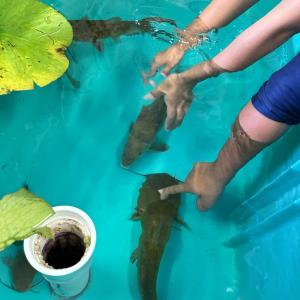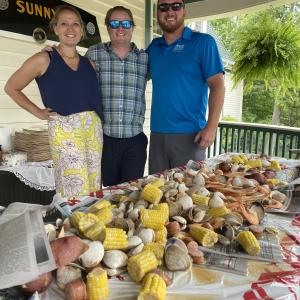Contributed by Gerry Smith, Consulting Ornithologist
The breeding Bald Eagle population along the St. Lawrence continues to grow. Before the great decline of this species, which was caused by DDT (Dichlorodiphenyltrichloroethane) after World War II, nesting Eagles occurred in many parts of the River. Evidence suggests our local breeding population had vanished by the late 1960s as only a single nest remained anywhere in New York State. While chemical contamination was the primary cause of decline, other things such as shooting and removal of nest trees impacted the remaining breeding pairs. During the next half century, the only Bald Eagles regularly seen locally were either wintering birds from Canada or summer visitors from the Florida population.
Since the banning of DDT in the 1970s, this species and other impacted birds of prey, such as Osprey and Merlin, have enjoyed dramatic population expansion. Since Bald Eagle reproduce more slowly and on average live longer than smaller species, their recovery has taken a bit longer. Since the mid-1990s, the continuing population increase in much of North America has been truly spectacular. In my opinion, there are probably more of the US National Bird now than at any time since the Civil War. The improvements in firearms at that time and the hatred of birds of prey by an uninformed citizenry undoubtedly resulted in massive shooting losses to all eagles and hawks. The environmental education resulting from the DDT era story has changed all that. While illegal shooting still occurs, it's now a minor cause of eagle mortality.
The massive increase in eagle population is obvious in our region particularly during this century. It is now feasible to see an eagle anywhere near open water at any time of the year. Breeding Bald Eagles are still not that frequent but the population is still increasing. Thanks to local birder Bill Munro's observations, we know of four nests in both US and Canadian waters in the Thousand Islands. A very conspicuous nest exists on Basswood Island and birds from this nest are often seen in the Picton/Murray Island area. Two more nests exist on the Canadian side with one at the entrance to the Rift near Wellesley Island. Another is present on a small island near Dingman Point. The pandemic has obviously limited observations during the last two summers and it is likely that other nests may be present along the River.
In the past, one would never publicly reveal even general nest locations for fear of disturbing the birds, however, these nests on small islands are hard to miss. As long as they are observed from a boat at a respectful distance, the birds can generally tolerate observations. The observers simply need to use common sense and if any wildlife you are observing show signs of agitation, BACK OFF! Give Bald Eagles their personal space and everyone is happy.
Bald Eagles on the River in spring and summer months are only proven to be breeding if associated with a nest. Adult birds not around a nest may be visitors from further south enjoying a summer vacation as much as human River Rats do. Since our expanding Bald Eagle population seems to be acquiring housing from Ospreys by force, one should check out local Osprey nests each year to ascertain the occupants. While we humans are thrilled with the Bald Eagle Renaissance, I suspect Ospreys have a different view of the matter. It is likely the local Bald Eagle population will continue to increase in the future. In a time of adverse human impacts on much of the natural world, this is indeed something to celebrate.




